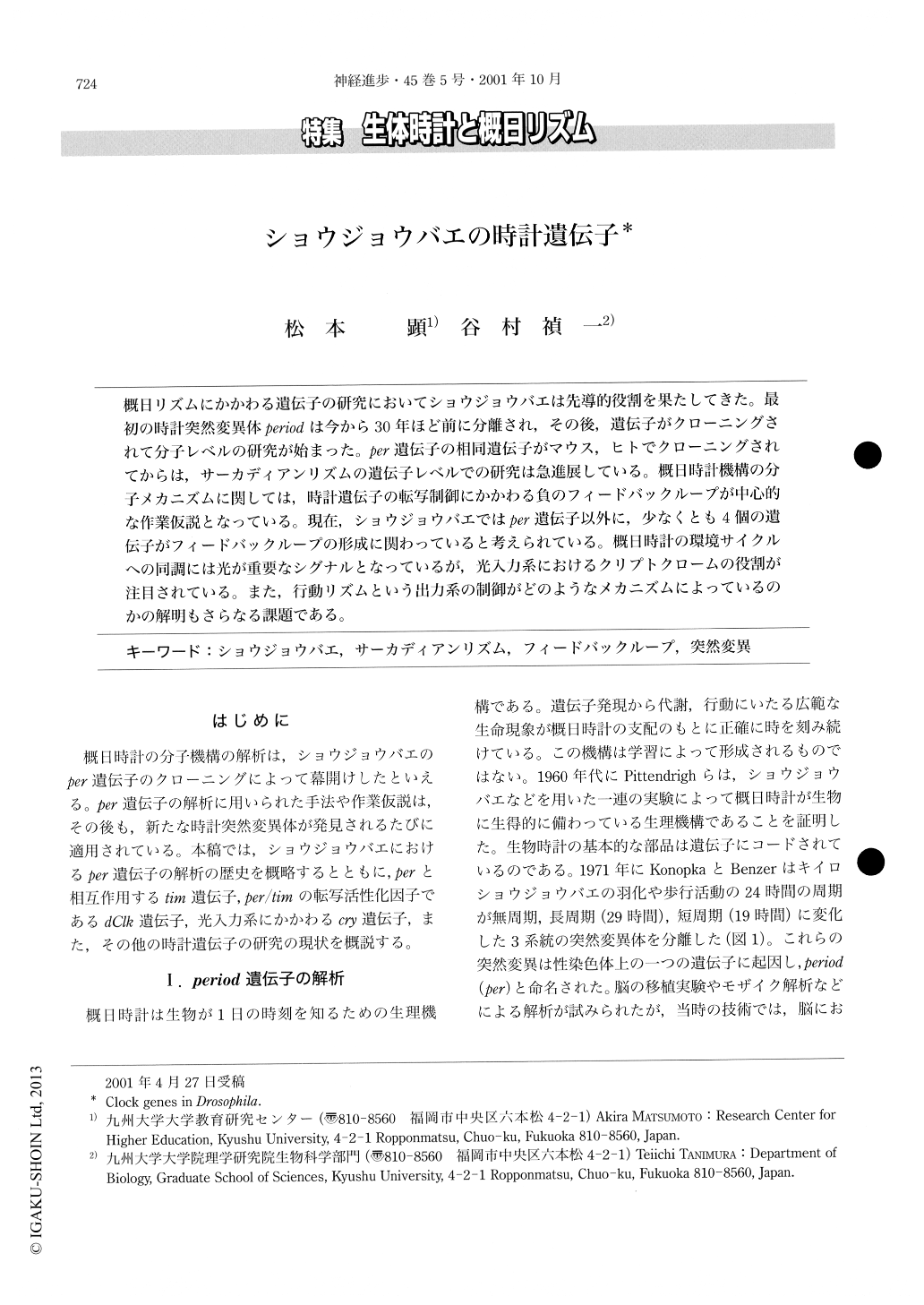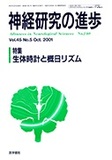Japanese
English
- 有料閲覧
- Abstract 文献概要
- 1ページ目 Look Inside
概日リズムにかかわる遺伝子の研究においてショウジョウバエは先導的役割を果たしてきた。最初の時計突然変異体periodは今から30年ほど前に分離され,その後,遺伝子がクローニングされて分子レベルの研究が始まった。per遺伝子の相同遺伝子がマウス,ヒトでクローニングされてからは,サーカディアンリズムの遺伝子レベルでの研究は急進展している。概日時計機構の分子メカニズムに関しては,時計遺伝子の転写制御にかかわる負のフィードバックループが中心的な作業仮説となっている。現在,ショウジョウバエではper遺伝子以外に,少なくとも4個の遺伝子がフィードバックループの形成に関わっていると考えられている。概日時計の環境サイクルへの同調には光が重要なシグナルとなっているが,光入力系におけるクリプトクロームの役割が注目されている。また,行動リズムという出力系の制御がどのようなメカニズムによっているのかの解明もさらなる課題である。
Behavioral and molecular genetic studies in Drosophila have led to identification of several genes involved in cir-cadian rhythms. These genes define a transcription-translation-based negative feedback loop. Some of the genes are implicated in the input or output pathways. Homologues of these genes have been found in mice and humans, suggesting that the molecular machinery of the circadian system may be conserved throughout the animal king-dom.

Copyright © 2001, Igaku-Shoin Ltd. All rights reserved.


